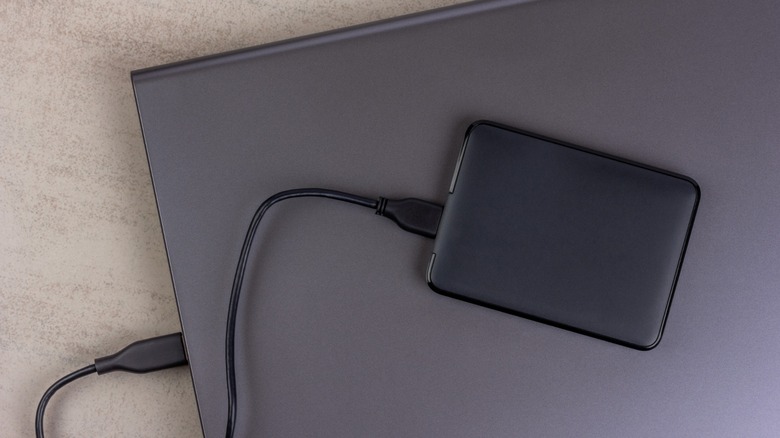Here's Why You Shouldn't Leave Old SSDs Unplugged For Too Long
When you power off an SSD and leave it unplugged, the countdown begins. Solid-state drives (SSDs) have changed the way we store and access data. Data accessibility and preservation are the benchmarks of any storage device and, as such, are an integral part of device performance. Managing your storage is one of the ways to maintain your new device and extend its performance. SSDs have been a great addition to the world of innovative tech. They are fast, quiet, and shock-resistant. Unlike old-school hard drives, SSDs don't rely on spinning platters or moving parts. Instead, they use flash memory to keep your files safe and sound.
But here's the thing: Just because an SSD isn't in use doesn't mean your data is frozen in time. In fact, if you've got an old SSD packed away in a drawer, unplugged and forgotten, it might already be silently losing your precious files. This isn't just a wild tech myth. It's backed by standards and observations. With that said, here's why you shouldn't leave old SSDs unplugged for too long.
Why unplugged SSDs fade over time
Unlike HDDs that can sit idle for years and still spin back to life, SSDs slowly degrade when left powered off for too long. SSDs use floating-gate transistors to trap electrical charges. Those charges represent your files. But over time, even without use, the electrons stored in these cells can leak. That slow leak is enough to corrupt your data.
According to JEDEC standards, consumer-grade SSDs are only required to retain data for one year when stored at 87 degrees Fahrenheit. Higher temperatures accelerate charge leakage. This means that if your SSD sits in a warm room, you're basically cooking your files. Enterprise-grade SSDs have a shorter span of three months after unplugging. This phenomenon isn't new, but it's often misunderstood. Many assume solid-state means stable forever, but in reality, SSDs are more like batteries than safes. They lose their charge even when unused.
The effect is subtle at first. You might not notice until you plug the drive in and get errors, corrupted files, or a message saying the disk is unreadable. These are warning signs that your SSD might be on its last legs. It doesn't matter how long SSDs are supposed to last, temperature affects their lifespan. Also, note that the data retention time stated for an SSD does not refer to a brand-new SSD. Rather, they are for used SSDs that are at the tail end of their Terabytes Written (TBW). This is the total number of terabytes of data that an SSD can write in its lifetime.

